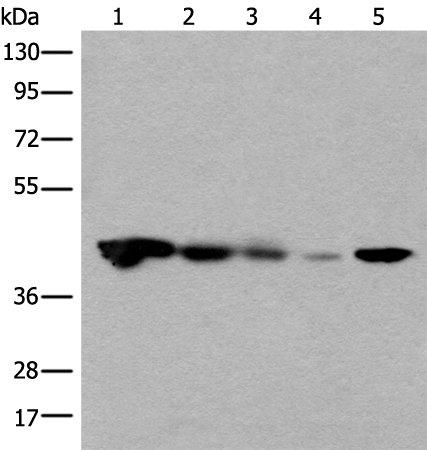CECR5 Polyclonal Antibody
For reference only. Please follow the manual included in your kit for instructions.
Catalog Number
Product Name
CECR5 Polyclonal Antibody
Catalog Number
RD217786A
Clonality
Polyclonal
Purification Method
Antigen affinity purification
Isotype
IgG
Host
Rabbit
Background
Adenosine deaminase is an enzyme that is present in most tissues and exists predominantly as a monomer, although in some tissues it is associated with adenosine deaminase-binding protein. Adenosine deaminase degrades extracellular adenosine, which is toxic for lymphocytes. A novel family of growth factors that share sequence similarity to adenosine deaminase has been identified. The cat eye syndrome critical region protein (CECR) family includes CECR1, CECR2, CECR3, CECR4, CECR5, CECR6, CECR7, CECR8 and CECR9. The genes encoding CECR proteins are candidates for Cat Eye Syndrome (CES), a developmental disorder associated with the duplication of a 2 Mb region of 22q11.2. CES is characterized by the combination of coloboma of the iris and anal atresia with fistula, downslanting palpebral fissures, preauricular tags and/or pits, frequent occurrence of heart and renal malformations, and normal or near-normal mental development. CECR family members are widely expressed. Specifically, CECR1 has the highest expression in adult heart, lung, lymphoblasts and placenta. CECR2 is also involved in neurulation and chromatin remodeling. Mutations in the CECR2 gene result in neural tube defects.
Immunogen Information
Immunogen
Synthetic peptide of human CECR5
Swissprot
Q9BXW7
Synonyms
A930002G03RikCat eye syndrome chromosome regioncandidate 5Cat eye syndrome chromosome regioncandidate 5 homologCat eye syndrome critical region protein 5Cecr5CECR5MGC25951OTTMUSP00000025905
Calculated MW
46 kDa
Observed MW
Refer to figures
Gene Accession
NP149061
Applications
Reactivity
Human
Tested Applications
WB,ELISA
Conjugation
Unconjugated
Dilution
WB 1:500-1:2000, ELISA 1:5000-1:10000
Concentration
1.3 mg/mL
Storage Buffer
PBS with 0.05% NaN3 and 40% Glycerol, pH7.4
Storage Instructions
Store at -20°C. Avoid freeze / thaw cycles.
